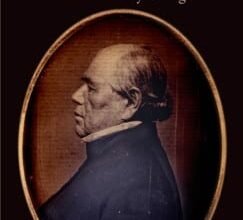Sojourner Truth’s Groundbreaking 1828 Court Case


 This episode of A New York Minute in History podcast commemorates Women’s History Month by uncovering the groundbreaking 1828 court case of Sojourner Truth, a self-emancipated Black woman who took on a white slave owner to free her young son from slavery in the South.
This episode of A New York Minute in History podcast commemorates Women’s History Month by uncovering the groundbreaking 1828 court case of Sojourner Truth, a self-emancipated Black woman who took on a white slave owner to free her young son from slavery in the South.
In 1828, Sojourner Truth, then known as Isabella Van Wagenen, sued for and won the freedom of her young son, Peter, from bondage. The case marked the first time an African American women won a lawsuit in the United States. She was represented by Herman M. Romeyn and John Van Buren (later a US Representative).
In her lawsuit, Isabella stated that her son Peter was born prior to “the fourth day of July in the year 1799.” The Act for the Gradual Abolition of Slavery, enacted in New York State in 1799, specified that children born to an enslaved mother after July 4, 1799 were legally free after serving their mother’s master until they reached 28 (male) or 25 (female).
New York’s final act of emancipation, the Gradual Emancipation Law of 1817, set July 4, 1827 as the date of total abolition of slavery in New York State.

 Isabella stated that her former owner, John Dumont, had sold Peter to Eleazer Gedney who transferred Peter to his brother Solomon Gedney, who then sold him to their brother-in-law (Fowler) to transport to Alabama so that he might remain in slavery contrary to the laws of New York.
Isabella stated that her former owner, John Dumont, had sold Peter to Eleazer Gedney who transferred Peter to his brother Solomon Gedney, who then sold him to their brother-in-law (Fowler) to transport to Alabama so that he might remain in slavery contrary to the laws of New York.
The suit was filed against Solomon Gedney, Fowler, and the Albany Supreme Court for allowing this illegal sale. In court, Fowler returned Peter to Solomon Gedney to avoid indictment.
In People v. Solomon Gedney (1828) the judge ordered “[the] boy be delivered into the hands of his mother— having no other master, no other controller, no other conductor, but his mother.”
Solomon Gedney was Dr. Solomon H. Gedney Sr. (1769-1836), then of New Paltz.
Sojourner Truth’s memoir, The Narrative of Sojourner Truth (1850), recounts this historic case.
Court documents from this case were only discovered in 2022. You can see the writ of habeas corpus and related documents at the New York State Archives.
This episode of A New York Minute in History podcast features interviews with Barbara Allen, author and sixth-great granddaughter of Sojourner Truth along with Taylor Bruck, Ulster County Clerk and the City of Kingston Historian.
Listen to the episode or read the transcript here.
Read more about slavery in New York.
Illustrations, from above: Sojourner Truth historic sign in Kingston; and the cover of the writ of habeas corpus (courtesy new York State Archives).
Source link




